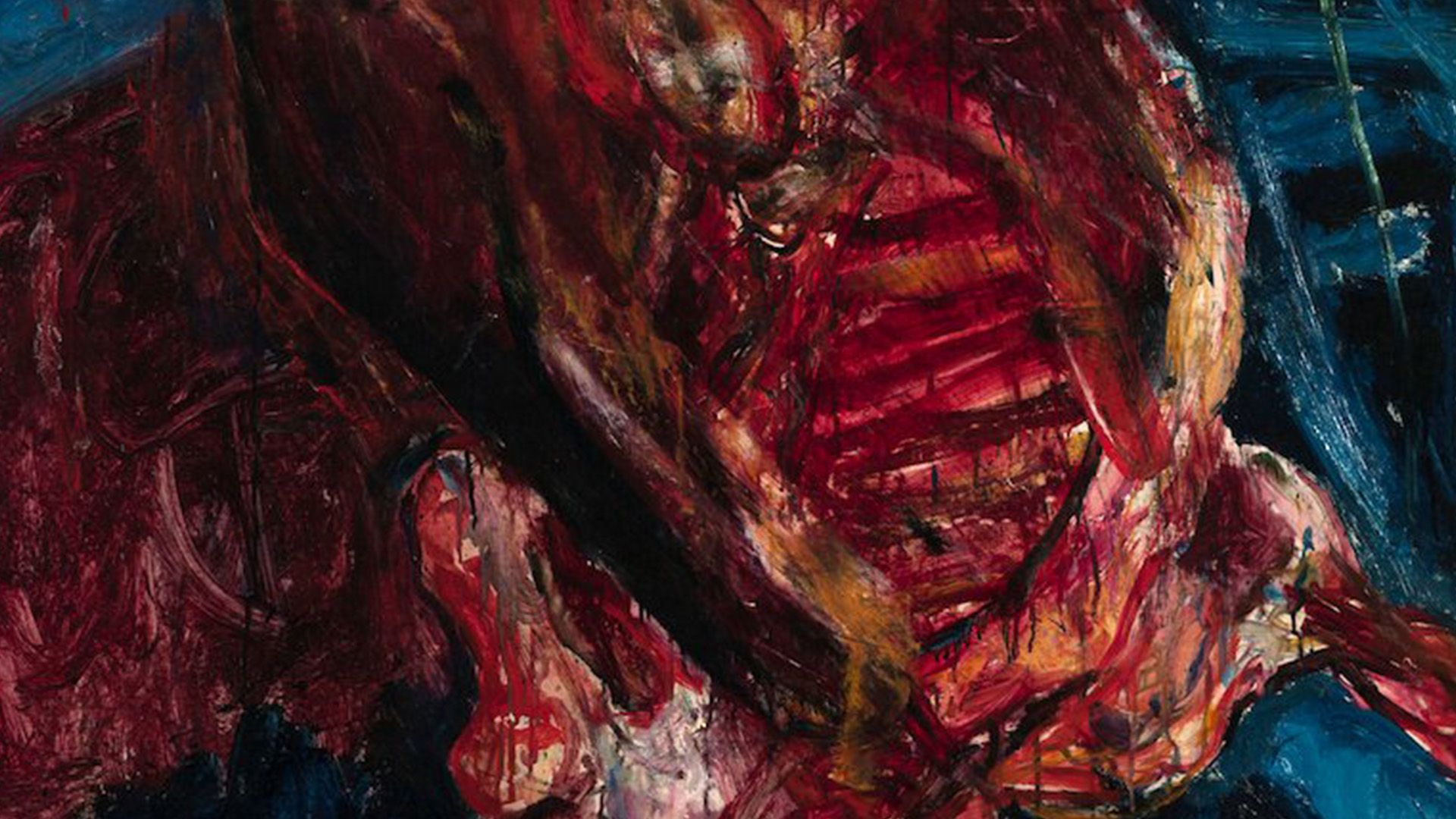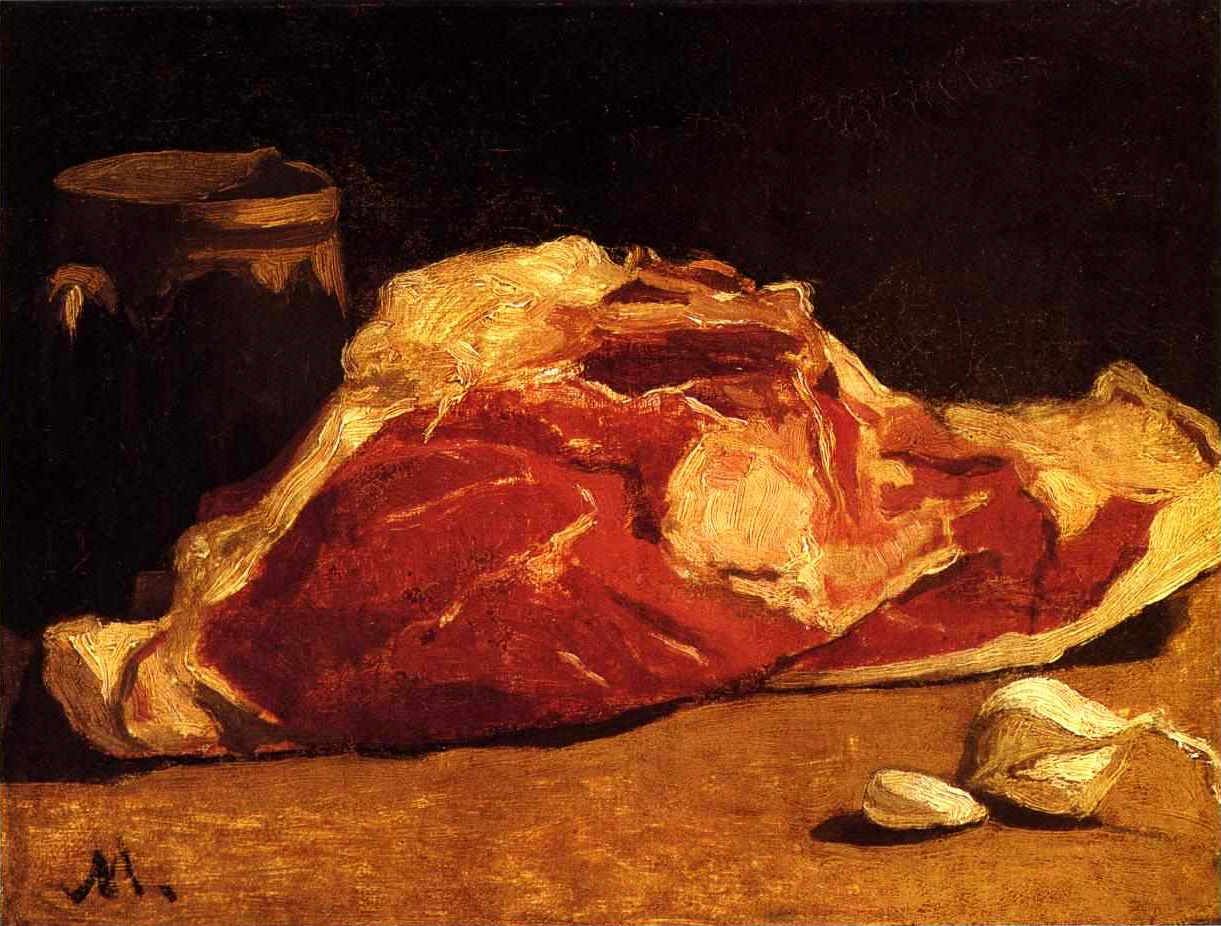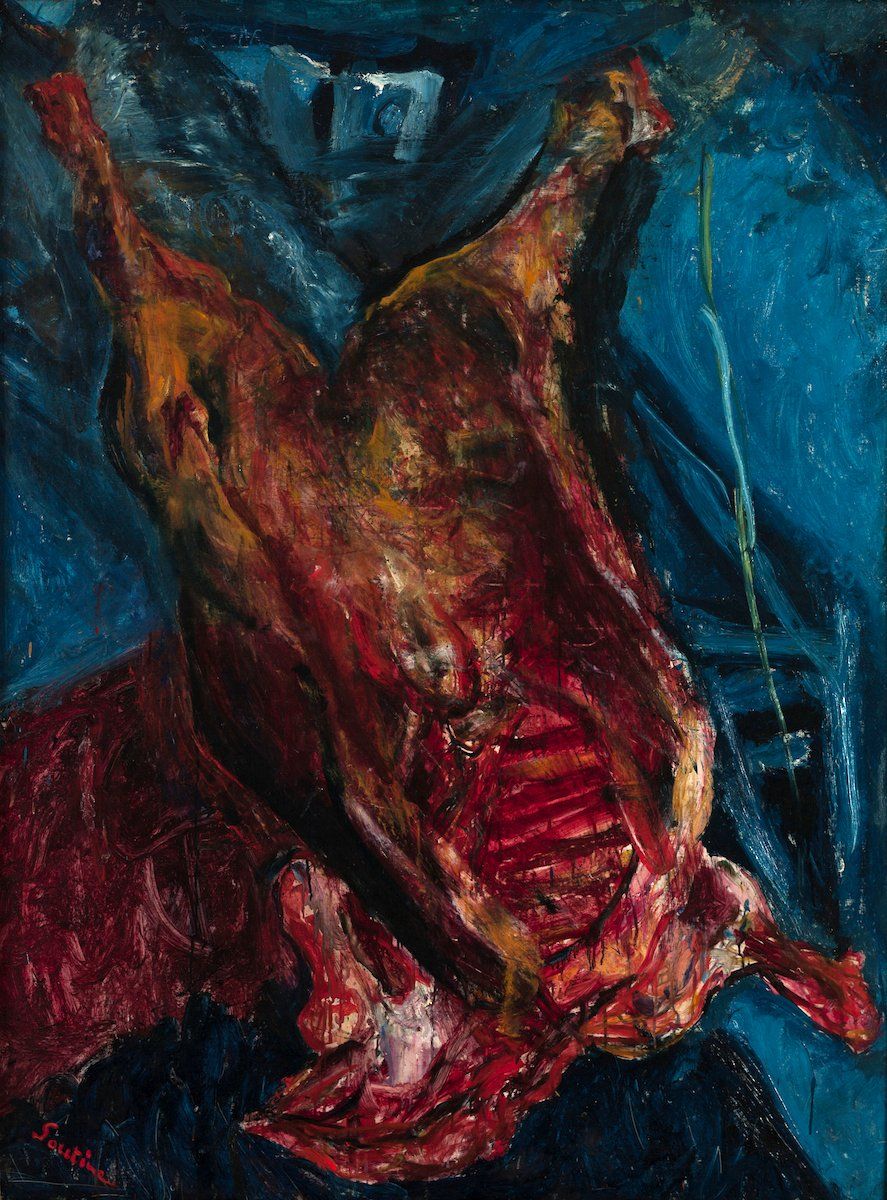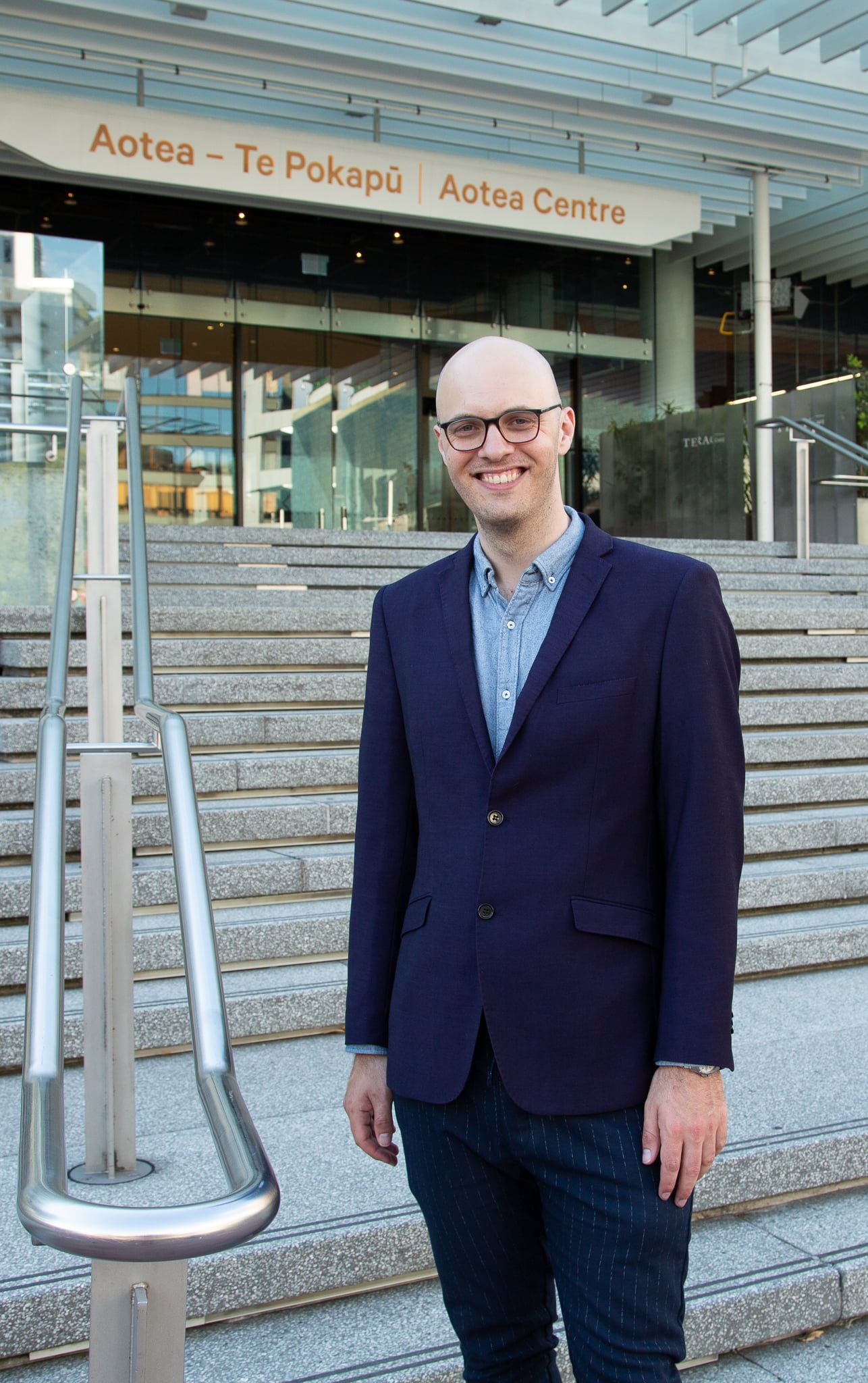Power, Money, Complicity: James Wallace and the Arts
The sentencing of ‘prominent businessman’ and arts philanthropist Sir James Wallace reveals the greater complicity of the arts industry in dirty money and the abuse of power. Theatre academic James Wenley asks how we can all step up.
TW: Sexual assault
“We know the things you do. The little favours you grant,” says the assistant conductor to the maestro. The 2022 film Tár builds a picture of an internationally renowned artist, played by Cate Blanchett, who abuses her position as the chief conductor of the Berlin Philharmonic and grooms, then discards, young female artists eager to make it in the music world. The assistant conductor only puts this comment to Lydia Tár after she moves to fire him; he’d likely have otherwise remained silent.
Whether through film, stage or the page, art has always been a potent means of confronting the harm that people can inflict on others. With the distance of fictionality, we can ponder in morbid fascination the monsters within our societies, and the structures that enable them. But when these stories play out in our own communities, our instincts can be to turn away, to stay silent.
Now that name suppression has lapsed, we can finally tell the story of the harm caused by arts philanthropist Sir James Wallace, convicted on three counts of sexual assault for incidents in the early 2000s, 2008 and 2016, as well as two counts of attempting to dissuade a witness. It is vital we tell this story, because the arts sector was long complicit in Wallace’s offending.
People in the arts community excused, minimised and tolerated his behaviour because his philanthropy was essential to the financial sustainability of their organisations and careers.
For years, it was widely known in the arts community that Wallace was predatory towards young men. People in the arts community excused, minimised and tolerated his behaviour because his philanthropy was essential to the financial sustainability of their organisations and careers. This was the arts sector’s deal with the devil.
Wallace was at the centre of the arts world in Aotearoa – he was everywhere: the name sponsor for our major arts awards as well as many smaller awards for creative writing or the Short+Sweet play festival; his name adorned buildings; Auckland Council housed his expansive Wallace Arts Trust collection at Pah Homestead; he partnered with Fulbright to send artists overseas; he was a founding patron or funder of New Zealand Opera, the Royal New Zealand Ballet, Auckland Theatre Company and the ASB Waterfront Theatre; he was at all the openings and arts events; he even produced some of our biggest local films. A 2016 Stuff piece noted that “famous opera singers, movie stars, royals, prime ministers and governors-general” all converged at Wallace’s Rannoch mansion in Epsom for “countless gatherings, including the odd ‘riotous party’.” At the “pretty wild” wrap party for Hunt for the Wilderpeople (produced by Wallace), Sam Neill is reported to have “shown off his disco skills in the great hall.”
All of this added to Wallace’s legitimacy – the arts world said, here is someone important, someone lauded. Wallace was someone who could help your career; please him, and the cheque book would open.
This was the arts sector’s deal with the devil.
In the Stuff piece, Wallace was looking for an artist to join him at Rannoch – a ‘residency’. “If they are good company we’ll go to plays, opera, theatre and ballet. I’m out almost every night to something like that,” Wallace says. “I have a very low boredom threshold; I have to be kept engaged.”
Wallace’s wealth was inherited, following his family’s success in the meat industry. It is too perfect a symbol really: accumulating wealth through rendering dead cows, moving blood-soaked profits into arts funding, meat money transformed into works of beauty and awe.
In a September 2017 Viva profile (the same month as Wallace’s first trial was scheduled), Wallace estimated that he gave $2 million per year to the arts. This is small change when you have a net worth of $170 million, but for the arts this is an eye-watering sum – equivalent to an entire Creative New Zealand quarterly Arts Grants round, or the taxpayer’s contribution to the Music Commission.
Public arts funding is incredibly competitive, and mostly out of reach for younger emerging practitioners. The median income that our creative professionals make from arts and creative activities is just $19,000 per year. Our artists aren’t properly valued financially.
Public arts funding is incredibly competitive, and mostly out of reach for younger emerging practitioners.
The arts sector is reliant on private philanthropy to survive – it is baked into our structures. There isn’t enough public money to go around, so we need influential business people to make up the shortfall (private arts philanthropy in Aotearoa is estimated to be $40 million per year). This makes the arts sector particularly vulnerable to those who use their wealth and power to do harm.
There’s a long, long history of a dependent relationship in the arts on patronage. Jon Mann writes for Artsy that patronage “paved the way for some of history’s most enduring works of art”. Shakespeare was one of the Lord Chamberlain’s Men (and later King’s Men). Leonardo da Vinci’s The Last Supper was paid for by the Duke of Milan. Mann points out that recording the names of artists only began regularly during the Renaissance: “before then, artists were largely seen as manufacturers and realizers of the grand ideas of powerful patrons with the knowledge and means to commission art.”
Difficult questions have been raised in recent years around the ethics of arts sponsorships. In the UK, major institutions such as the Tate and the National Portrait Gallery refused further funding from the Sackler family – prominent and generous arts givers – who illegally profited from America’s opioid crisis. These institutions didn’t pull the Sackler name by their own volition, but due to protests led by photographer and activist Nan Goldin. That took place as part of a wider campaign for arts organisations to divest from climate polluters like BP, pushing back against ‘artwashing’: companies using arts and culture sponsorship to legitimise harmful business practices.
The amount CNZ can invest back into arts, culture and creativity each year fluctuates based on how many Lotto tickets are sold. This is dirty money too, Government-led artwashing.
Alongside the oversized reliance on patronage, a deeply uncomfortable aspect of how we fund the arts in Aotearoa is the extent to which we are beholden to gambling profits from lotteries and gaming trusts. The majority of Creative New Zealand’s annual budget comes from lotteries money, not taxpayer dollars, and the amount CNZ can invest back into arts, culture and creativity each year fluctuates based on how many Lotto tickets are sold. This is dirty money too, Government-led artwashing.
While we urgently need new arts funding systems with a greater taxpayer contribution, there remains an ongoing role for private and business sponsorship of arts. But as Emil Scheffmann reports in his ‘Uneasy Money’ article for Metro, new generations of arts patrons are failing to emerge. There’s a dwindling pool of older philanthropists, and those inheriting the wealth aren’t giving to the arts in the numbers that their parents did. Wallace himself makes the case for greater patronage: “it is the civic and moral duty of those that are in the position to do so to support appropriate institutions, causes or individuals financially and in other ways,” he says.
Support for the arts is welcome, but it isn’t a benign relationship and there are often strings attached. Patrons get something out of their giving. In the words of Wallace, people like him “contribute to improving and enriching the lives of those around them, which in turn can be very rewarding for the philanthropist.” For Wallace, this included access to hundreds of young men. The exploitation of artists by the rich and powerful, and the unsustainability of Aotearoa’s arts sector and arts funding systems are not separate issues: they are deeply, painfully, connected.
Still Life, the joint of meat by Claude Monet
***
When I was starting out as a theatre maker, putting on indie productions at small Auckland venues, I was encouraged by older people in the industry to apply for funding from the Wallace Foundation. While the grants on offer were small, around $500–1000, many low-budget theatre productions that wouldn’t expect to get a look-in from Creative New Zealand benefited from Wallace’s funding. On paper, there were far fewer hoops to jump through than Creative New Zealand or Council funding processes. I knew of Wallace’s reputation for favouring young men, and it was suggested, even joked about, that as a young man I would have a good chance of securing his funding. This proved correct.
When I was in my early 20s, attending an opening-night function at Q Theatre, I was cornered by Wallace. He started asking me very inappropriate, personal and intimate questions – what was my sexuality, did I have a partner, what kinds of intimate things did I like to do, and suggested I should spend more time with him. I remember freezing, panicked, not sure how to handle this question line from a powerful man or how to get myself out of the situation. This was in public, yet it’s clear that this approach was his normal way of operating. From then on, I’d do the dance of trying to avoid Wallace at arts events. At one show I was seated directly next to him. I don’t remember the play, just the feeling of acute discomfort and anxiety that bubbled away over the entire performance.
I still feel a tightening in my stomach whenever I think of that opening-night interaction with Wallace at Q Theatre. There’s shame, and a little bit of guilt, too. He had funded my show, goes the voice in my head, so maybe he felt he could talk to me like that. This interaction is part of a spectrum of harassment and abuse enacted by Wallace. The way he treated me – and I know also treated many others – was unprofessional, marked by a distinct power imbalance, and should never have happened. And what Wallace has done to other people is straight-up illegal. How did we ever tolerate unwanted sexual attention, harassment and sexual violence as a condition of arts funding?
How did we ever tolerate unwanted sexual attention, harassment and sexual violence as a condition of arts funding?
Sit with the stories of those Wallace has harmed. In 2008, Dudley Benson was invited by Wallace to Rannoch House after he applied for funding. There, Benson was indecently assaulted by Wallace, and likely drugged. “By the time I was home I could hardly stand, couldn’t speak and vomited. It sounds crazy, but it didn’t occur to me for several weeks that I had been drugged. Who would do that? At a meeting?”
“My last duty in this whole despicable saga is to make public what the super-predator James Wallace has done, and how he has been enabled by the complicity of the NZ arts world,” Benson added on Twitter earlier this month.
My last duty in this whole despicable saga is to make public what the super-predator James Wallace has done, and how he has been enabled by the complicity of the NZ arts world. I'm now working through the best way to do this. Thanks.
— Dudley Benson (@DudleyBenson) July 3, 2023
There’s now a canon of plays related to Wallace. In 2009, a year after Benson was assaulted at Rannoch, the play Dinner Party Money, written by Thomas Sainsbury, was performed, featuring an abusive arts philanthropist hosting a private dinner party for young artists. That character was named Winston James in the original manuscript (available from Playmarket), and the play offers a depiction of Wallace’s modus operandi: one character recalls being plied with alcohol, getting assaulted by Winston, and then receiving funding for his show. The philanthropist’s gender was flipped for the production, but the play blatantly connected with Wallace’s reputation – the director even recalls a Wallace staffer noting similarities. But here’s the most brazen aspect – the play was performed at the then Wallace Trust Gallery on Queen Street. Wallace famously attended and reportedly had a jolly time. There was no catching the conscience of the would-be King, no call to stop the play and turn on the lights, like Claudius does in Hamlet after being confronted with a replay of his crimes. The next day, the James Wallace Arts Trust manager wrote to the director, “we all thoroughly enjoyed the performance last night”, and waived the venue hire fee. Wallace kept offending. The arts world stayed silent.
This year I have seen two separate solo shows in which the performers discuss being assaulted by a wealthy businessman under name suppression. I have so much admiration for those sharing the truth about Wallace – in court and on our stages – despite the immense barriers presented by the legal system. These performances are attempts by artists to reclaim a degree of power within structures that actively silence the powerless, shut down speaking out.
Wallace’s behaviour was never okay. But the wider arts industry valued his money over people. Wallace’s offending was intimately bound up in his giving. No art that was funded by Wallace is worth the suffering of those he harmed.
Carcass of Beef by Chaïm Soutine
***
There are monsters across all industries, all sections of society. Whenever a power imbalance exists, there will be those who will try to abuse it. I believe the arts are emphatically part of the solution in addressing our society-wide problem of abuse and sexual violence. I take inspiration from theatre makers Eleanor Bishop and Karin McCracken, who are driven to help end sexual violence in our lifetime. Their show Yes Yes Yes has played to thousands of young people since 2019, shining a light on positive and consensual relationships.
Conversely, I am filled with anger when people use the arts – which hold this immense power to heal, to uplift, to provide hope – and corrupt and wield them to do harm.
I think of Mervyn Thompson, playwright and drama lecturer at the University of Auckland, who in 1984 was chained to a tree and accused of being a rapist. Many people were sympathetic to him, but the 2021 documentary Six Angry Women features testimony from multiple women harmed by Thompson. I think of composer Jack Body, who groomed and assaulted students at Victoria University of Wellington’s School of Music for decades. I think of actor Rene Naufahu, who indecently assaulted students taking his acting classes.
I also think of performer and producer Mika X, a former leader in the rainbow community and someone I admired, who was convicted of trying to dissuade a complainant from taking Sir James Wallace to court. “Dissolve it, get rid of it, let’s get you started on this career,” says Mika on the recording subsequently played in court, “let me ascertain some funds from [Wallace] at some point – which won’t be hard, I can assure you of that.” Offending takes place in a wider community context and a culture in the arts that downplays bad behaviour.
Offending takes place in a wider community context and a culture in the arts that downplays bad behaviour.
We’re able to talk about those who are deceased, or those who have been convicted. But almost everybody in the arts will know of other abusers who haven’t been publicly exposed. There are numerous instances that never hit the headlines, never make it to court. It’s hard to call out people and systems when the legal structures put the onus on survivors to make formal complaints, testify, and in so doing reveal themselves to their abusers. Court cases retraumatise, and the Wallace case dragged through the court system for years. That’s a heavy burden for those seeking justice.
Wallace was able to take advantage of the name suppression system for five years, a length of time usually only available to those who can afford to apply for extensions and delays. While Wallace was finally convicted in 2021, the arts world’s reckoning with its complicity has been delayed for the past two years because we couldn’t speak publicly about his convictions until now.
The muted response from arts leaders so far has been telling; most are ducking to say they are no longer funded by Wallace. Jonathan Bielski of Auckland Theatre Company is one of the few leaders to offer a full-throated repudiation: “Wallace’s crimes are appalling, and I condemn them in the strongest terms.” Why aren’t more arts leaders stepping up? It is not acceptable for arts organisations to wait it out until the media coverage falls away, quietly remove his name, and make embarrassing weblinks go dead. Nor is it enough merely to denounce the demon, and say that you stopped accepting his patronage.
Court cases retraumatise, and the Wallace case dragged through the court system for years. That’s a heavy burden for those seeking justice.
It took a community to enable Wallace to offend across so many years. Tár depicts how its protagonist operated in plain sight – collecting young protégées, publicly flaunting inappropriate conduct – and was protected by associates and boards. David Farrier similarly outlines Wallace’s operation in his Webworm post ‘How a Millionaire Meat Man Abused Young Men for So Long’. Farrier concludes, “I suspect there’s something self-justifying in the ‘well everyone knew it was happening, all those boys went into it with their eyes open’ claim because the truth is, it paid for people not to scrutinise that idea too closely; to not look too hard and long at whether the money they were accepting was tainted.” If the basis of your arts career is supported with dirty money, calling it out risks putting your entire career on the line.
Even though Wallace is convicted and serving time in prison, fearful silence remains the norm. Eighty-nine prominent New Zealanders provided letters of support for him at his sentencing, including fellow arts philanthropist Dame Jenny Gibbs, Sir Bob Harvey and filmmaker Vincent Ward. Most had no comment when approached by the NZ Herald. However, Elspeth Sandys, ONZM, continues to stand by her letter. Complicity continues. The Judge said the letters were “an important consideration in the sentence ultimately imposed”, which led to a 30 percent reduction of Wallace’s sentence. Artists Lee and Philip Trusttum wrote “the NZ art world without James’ patronage will be the poorer”. The safety of the art world, as the Wallace case exemplifies, isn’t valued as highly.
There’s still a pervasive notion that young artists need to suffer to get a start in their careers, because that’s what our current arts leaders experienced when they were young. That’s a cycle we need to break.
It is time that we put safety first. The arts community needs to unite around active prevention of sexual violence, harassment and bullying. All organisations funded by Wallace should be making statements and discussing the proactive moves they are taking around prevention. We owe it to all the people harmed by Wallace to bring some positive structural change out of this horrific situation. If it takes a community to enable harm, it also takes a community to prevent it.
All arts organisations have a responsibility to lead training, workshops and development of resources for harm prevention. We need to look at codes of conduct for arts patrons and private funding bodies. I should be able to easily find bullying and harassment policies on websites and read clear statements affirming zero tolerance for harmful behaviour. We can take the lead from SoundCheck Aotearoa’s Sexual Harm Prevention and Response Advisor service for the music community, and Equity’s intimacy guidelines and workshops on safety for stage and screen workers. There’s a lot of work still to do. There’s still a pervasive notion that young artists need to suffer to get a start in their careers, because that’s what our current arts leaders experienced when they were young. That’s a cycle we need to break.
As Dudley Benson reflects in an interview with 1 News: “We need to bring into the open what he did and part of that is sharing who I am. And I hope that this is an elixir for any shame that others have experienced with him. And I encourage them to share what’s happened. It’s the only way that we’re gonna get through this as an arts community. Keeping a secret makes you sick and it’s time to shine a light on what he did to our people.”
It is essential that our funding structures change, because the conditions that Wallace exploited and thrived in are still in place. We are entering an acute period of vulnerability for arts funding – still recovering from the pandemic, the budgets of Manatū Taonga Ministry for Culture and Heritage, Creative New Zealand, the Film Commission and city councils across the country are contracting. If this status quo entrenches, the arts sector will be even more reliant on private giving. And as long as our system is defined by financial precarity and power imbalances, we will never find a sustainable solution for these challenges.
It is the responsibility of everyone in the arts community to actively step up to prevent anything like this happening again. Will we rise to the task?
Struggling with the contents in this article?
The following websites / helplines are available for people in Aotearoa needing support:
- Safe to Talk (sexual harm): 0800 044334, text: 4334, email: [email protected]
- Women's Refuge: 0800 733 843
- Need to talk? Free call or text: 1737 for mental health support from a trained counsellor
- Youthline: 0800 376 633, free text: 234, email: [email protected]
- Shakti Youth: for migrant and refugee women - 0800 742 584 - 24 hours
- Hohou te rongo kahukura - outing violence: building rainbow communities free from violence
- You, me, us: promoting healthy queer, trans and takatapui relationships
- Music Helps Wellbeing Service: 0508 MUSICHELPS
- Soundcheck Aotearoa
- Male Survivors Aotearoa Helplines across NZ, click to find out more (males only).
- The Harbour Online support and information for people affected by sexual abuse.
- If you or someone else is in immediate danger, call 111.
Header Image: Carcass of Beef by Chaïm Soutine



